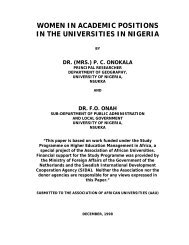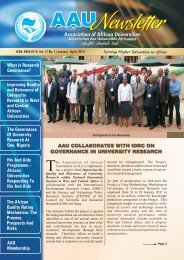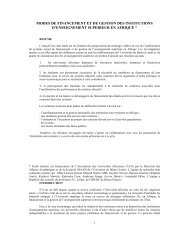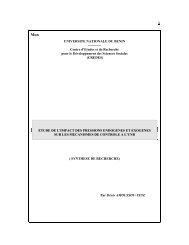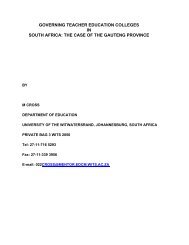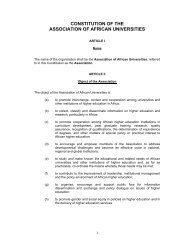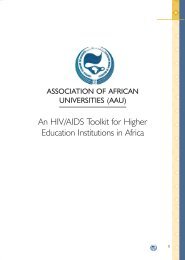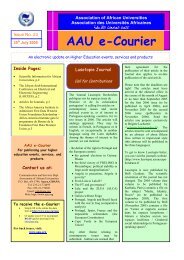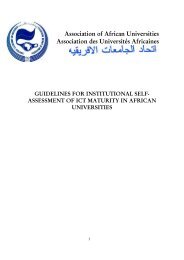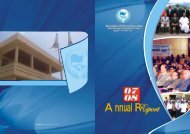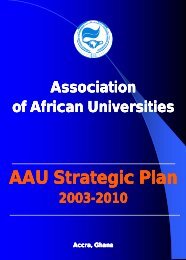undergraduates' attitudes and the study of mathematics at the ...
undergraduates' attitudes and the study of mathematics at the ...
undergraduates' attitudes and the study of mathematics at the ...
- No tags were found...
Create successful ePaper yourself
Turn your PDF publications into a flip-book with our unique Google optimized e-Paper software.
To develop more interest in <strong>the</strong> subject it showed th<strong>at</strong> <strong>the</strong> enrolment in <strong>the</strong> subject <strong>at</strong> University<br />
level could be increased if more students were motiv<strong>at</strong>ed to <strong>study</strong> <strong>the</strong> subject <strong>at</strong> lower levels.<br />
And to <strong>at</strong>tract more female students <strong>at</strong> lower levels <strong>the</strong> teaching <strong>of</strong> <strong>the</strong> subject had to be gender<br />
sensitive. This would involve for example teachers who taught <strong>the</strong> subject <strong>and</strong> <strong>the</strong> teaching<br />
m<strong>at</strong>erials e.g. textbooks. The teachers' role could be to avoid biases in class for example when<br />
questioning students <strong>of</strong> both sexes, in providing assistance <strong>and</strong> motiv<strong>at</strong>ion as already noted in<br />
studies by Shifferraw, 1982; Eshiwani, 1983; Leder, 1987, 1990; Becker 1991, <strong>and</strong> Seegers &<br />
Boekarts, 1996. The textbooks used could be gender sensitive th<strong>at</strong> <strong>the</strong> content in <strong>the</strong>se books<br />
does not reinforce <strong>the</strong> masculine language as is <strong>the</strong> case with m<strong>at</strong>hs textbooks used in Swazil<strong>and</strong><br />
schools. For example, <strong>the</strong>se textbooks identified more female activities in dressmaking <strong>and</strong><br />
cooking, unlike men who were identified in building, painting, driving cars, doing business,<br />
insuring cars, etc. (Kaino, 1996). This situ<strong>at</strong>ion could be taken to have a cultural or traditional<br />
background where boys' <strong>and</strong> girls' activities were demarc<strong>at</strong>ed.<br />
In many African countries, south <strong>of</strong> <strong>the</strong> Sahara, boys did <strong>the</strong> type <strong>of</strong> work which were regarded<br />
more tougher than work done by <strong>the</strong> girls. For example, girls carried out duties which were<br />
associ<strong>at</strong>ed with domestic work <strong>and</strong> gardening while boys did duties like looking after c<strong>at</strong>tle or<br />
crops. Such social expect<strong>at</strong>ions from <strong>the</strong> society could also have influence on occup<strong>at</strong>ional<br />
choices for both girls <strong>and</strong> boys. In order to overcome such influences, <strong>the</strong> m<strong>at</strong>hs textbooks used<br />
<strong>at</strong> lower levels should be gender sensitive in content present<strong>at</strong>ion or in o<strong>the</strong>r words <strong>the</strong> content<br />
should be more "girl-friendly" as Whyte, et al (1985) put it.<br />
24



